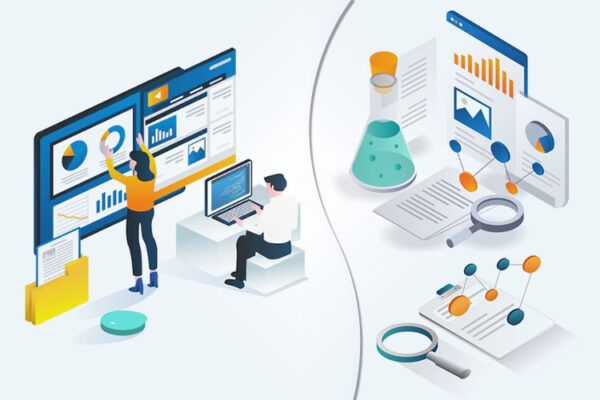
A brief search on the internet and one finds out that based on multiple predictions and sources, the world is all set to generate upwards of 170 zettabytes of data by 2025. This is a big jump from the estimated 79 zettabytes of data that we generated in 2021 alone. A similar search throws light on the potential losses due to poor-quality data. This can lead to lost revenue due to inaccurate analysis, which leads leadership to choose the wrong strategy or even damage the reputation and fines. No wonder a lot of organizations recognize the need to manage the quality of their data as one of their top priorities.
The pharmaceutical industry is a highly data-intensive business. It uses a variety of systems and has multiple sources, and utilizes and generates a variety of data. Since most of these systems have different data management practices and tools, the standardization, and consolidation exercise and managing the quality of the data can help companies save billions of dollars and provide quality insights for their everyday decisions. This would make the process of bringing drugs to the market faster.
Pharma Companies Facing Challenges in Maintaining Data Quality
Pharmaceutical companies are spending billions of dollars on technology for the standardization, consolidation, and centralization of this data. They are also spending on data quality platforms to maintain the quality of the data. However, even then, a lot of them are finding it a challenge to maintain the quality of the data. This is because data quality is not a one-time process, but organizations should have a strategy to manage it as an ongoing exercise.
Having made a case for the need and benefits of good data practices, let’s look further at how to achieve this.
Practices to Achieve Data Quality
A recent addition to the data and analytics space is the role of Data Stewards and the concept of Data Stewardship. In layman’s definition, a data steward plays an overseer’s role as far as data journey is concerned. This means right from the development, implementation, and maintenance of data assets, including data quality, to come up with data governance processes for the organization is the responsibility of data stewards. Typically, data stewards are from business teams, and thus their role is different than data custodians, who are from the Information Systems (IS) team and are more concerned with the security, database integrity, and technical environment of data assets.

This has led to the development of Data Stewardship as a specialized area and has allowed it to become an integral part of Data Governance. Data Stewardship encompasses the complete data lifecycle and gives access to organizations’ business users with high-quality data in a usable, safe, and consistent manner. At the core of data, stewardship is the separation of data assets and the acknowledgment that data assets are not the property of data stewards but they represent the concern of business users. Data stewards can be tasked with taking care of data assets organization-wide or may be limited to specific business functions. For enterprise-sized organizations, having Data Stewards is a must, and here are the three prerequisites to set up data stewards for success so that they contribute directly to the success of the Digital Transformation projects.
- Clearly defining the scope and responsibilities of their role – Data Lifecycle is a long journey and has multiple stages in it. Right from creation, maintenance, sharing, reuse, storage, retention back up, and security of data, the responsibility is with Data Stewards. At the end of the day, this is not an IS role but has end-of-the-line accountability towards the business function. Furthermore, since they work in a cross-functional environment, it’s good to have a responsibility and escalation matrix for issue resolution.
- Selecting the right people for the role – Data Steward is a specialized role and needs people with a keen eye for details and numbers and should have business understanding. As a person responsible for the data, it is imperative that they have sufficient knowledge and experience with the metadata and are aware of inter-dependencies across functions.
- The soft skills also matter – Since the role involves working across functions and geographies with the mandate to support various stakeholders, empathy is a much-needed skill set. Also important is the ability to understand cultural nuances when working with a global set of stakeholders. They need to have adequate technical skills to translate the requirements, and most importantly, they should have exceptional communication and a service mindset to be able to get all stakeholders on board.
- Measure, Monitor, and Correct – Have a baseline for the quality of the data and then measure the impact of data stewards. Showing an improvement in data quality allows you to build a solid business case for leadership investment into the problem of data quality. What you want to monitor will depend on what is your expected outcome from a data stewardship program.
- Creating Composite Culture that appreciates value generation through Data Stewards – This is a tricky one. Once we define the roles and responsibilities, select the right set of people for the role, and put the monitoring metrics in place, we focus on the cultural aspects and change management process. Like any other change, there is nothing like too much communication. Having a change management initiative around your data stewardship initiative will help your key stakeholders for a new way of working.
Data Stewardship to Ensure Quality of Data
In the end, what is most important is the accessibility, availability, and quality of data to meet the requirements of business function and, subsequently, the organization. This is what has been prescribed by DefineRight (DR) since its inception. Having dealt with various data types and delivered data models for specific-purpose insights, DR can help you with data cleansing and structuring as part of our business analytics service portfolio.
